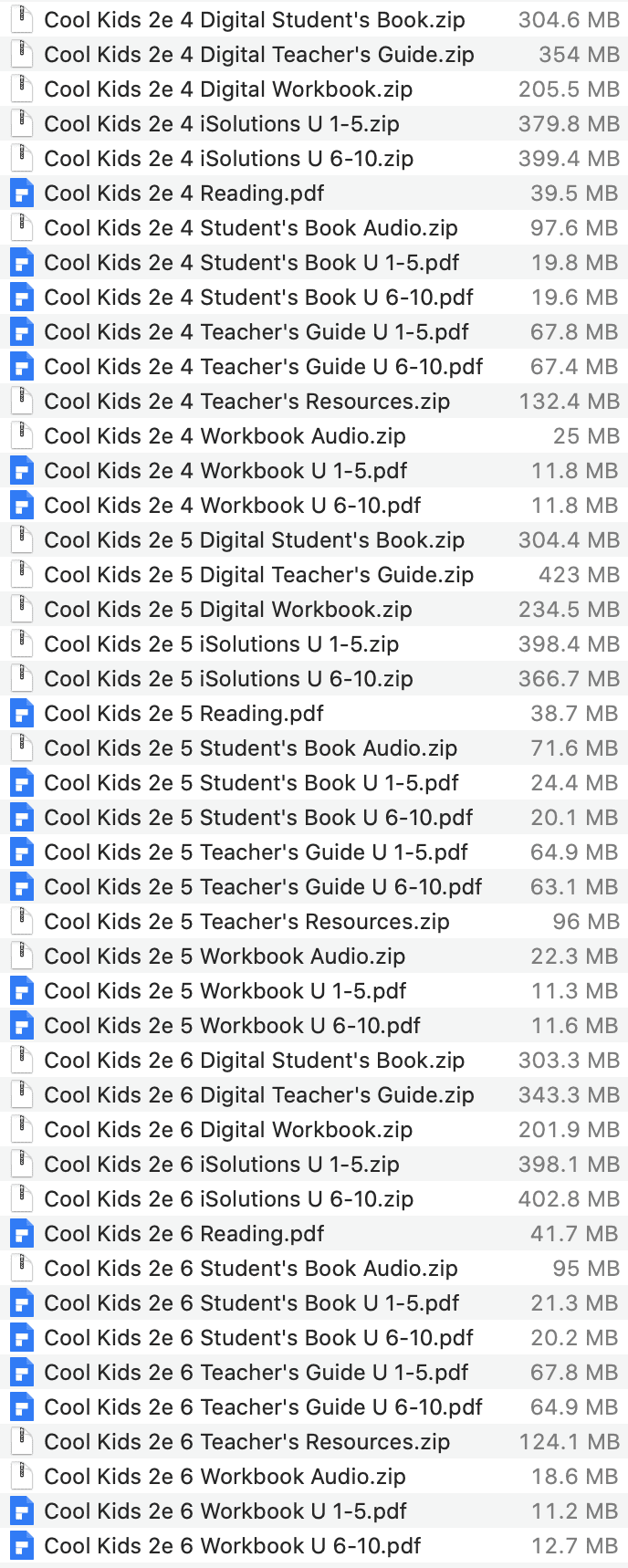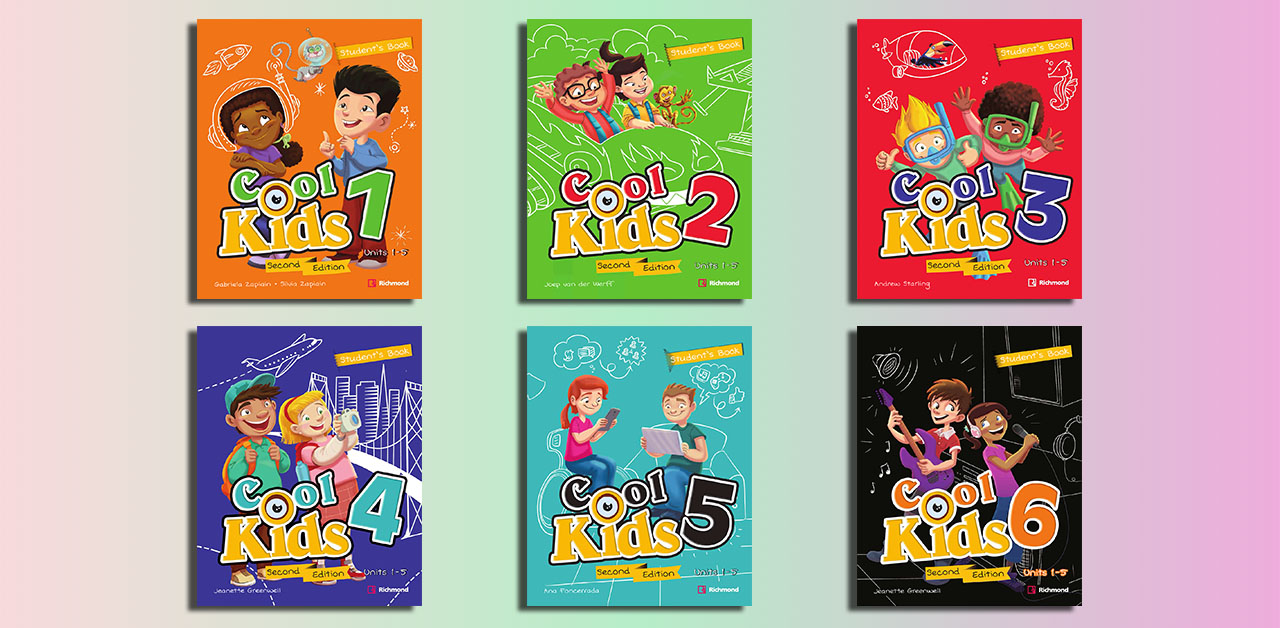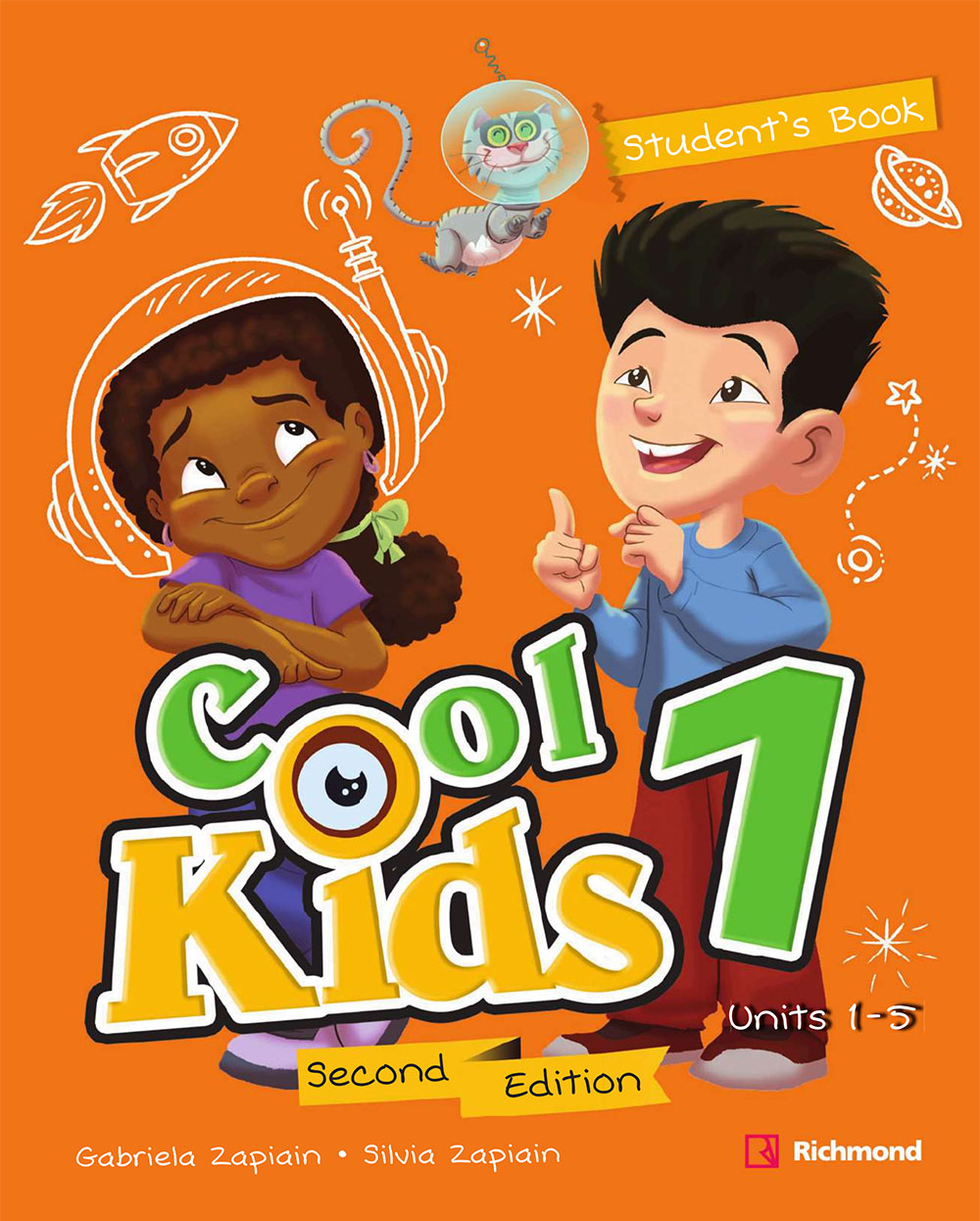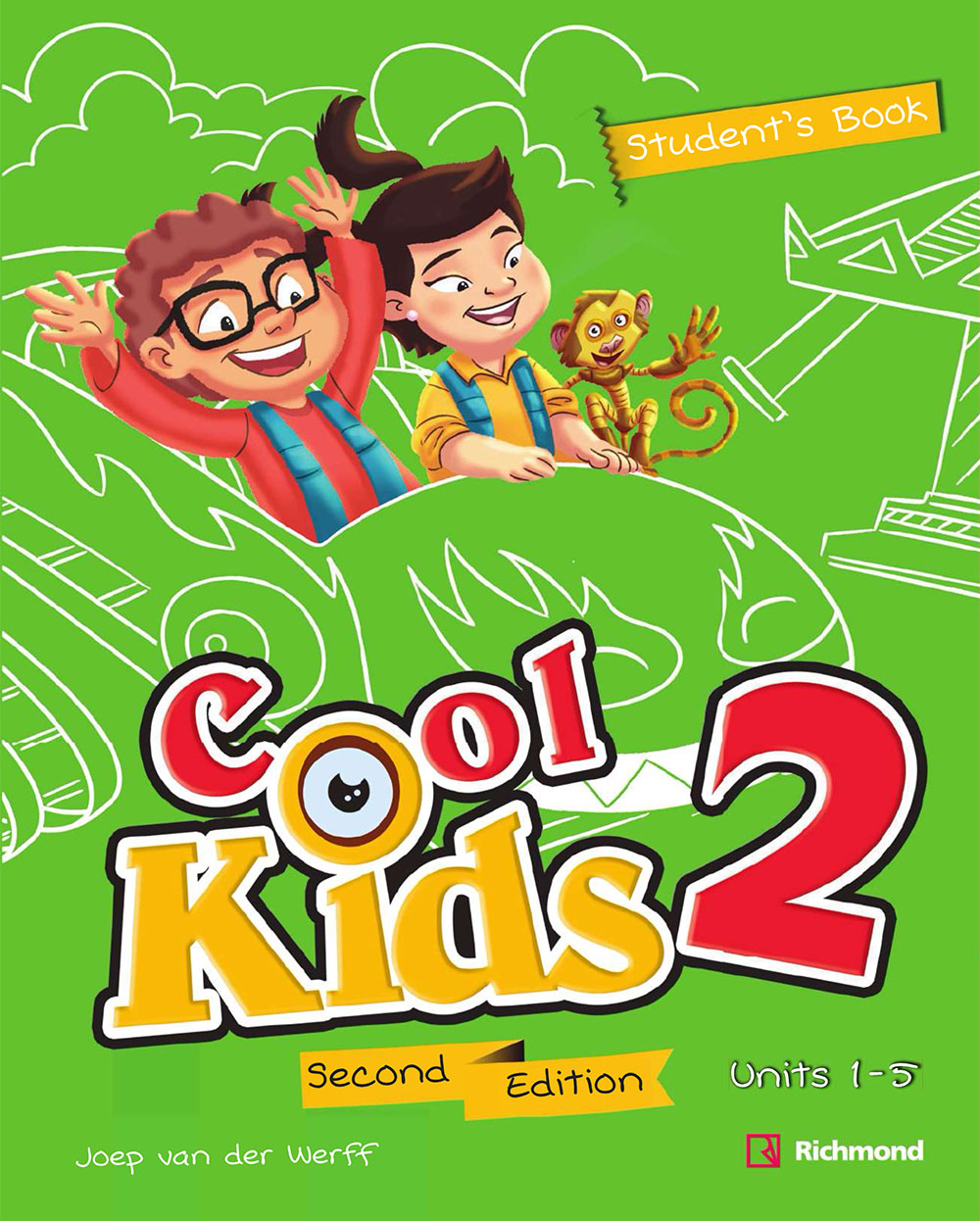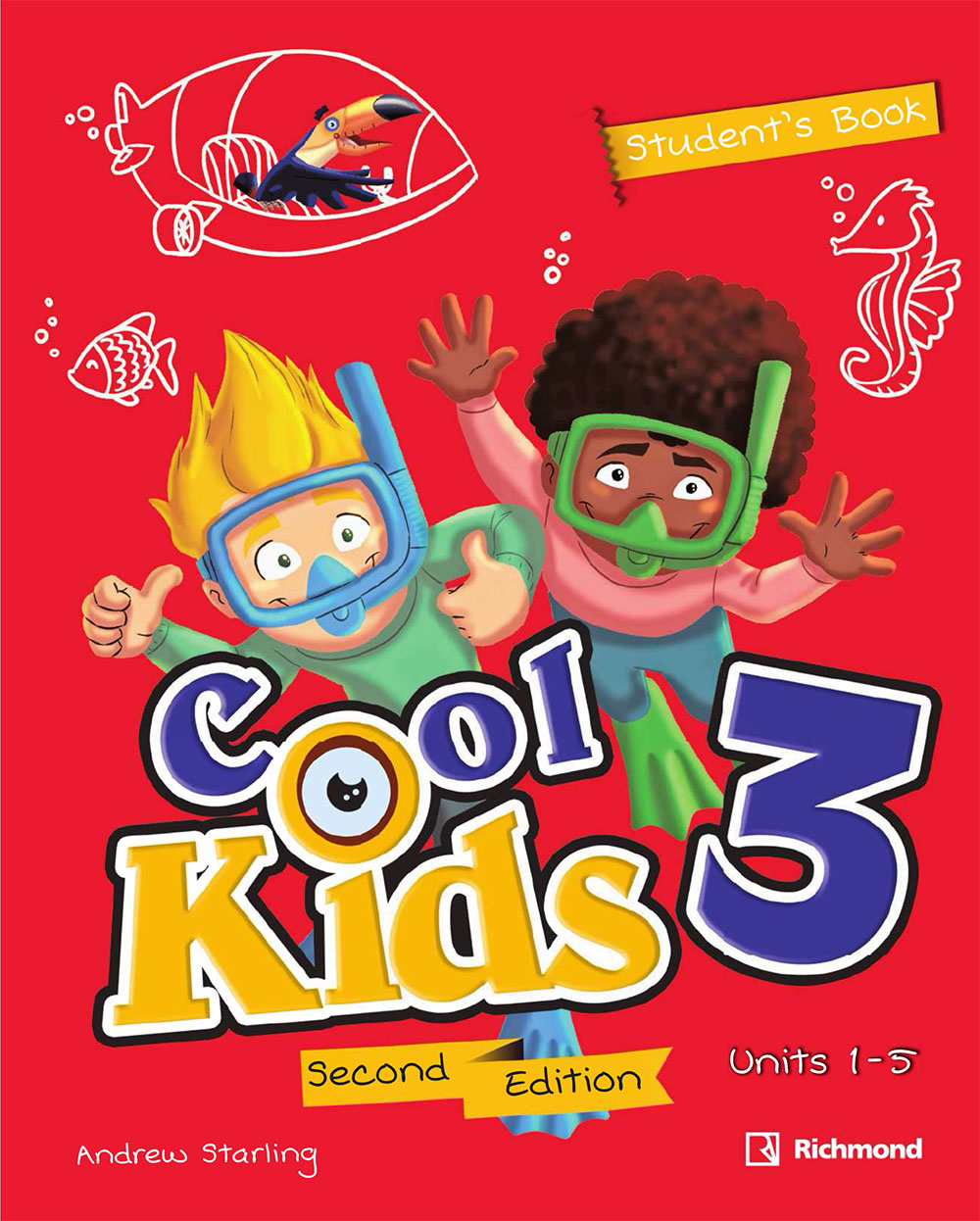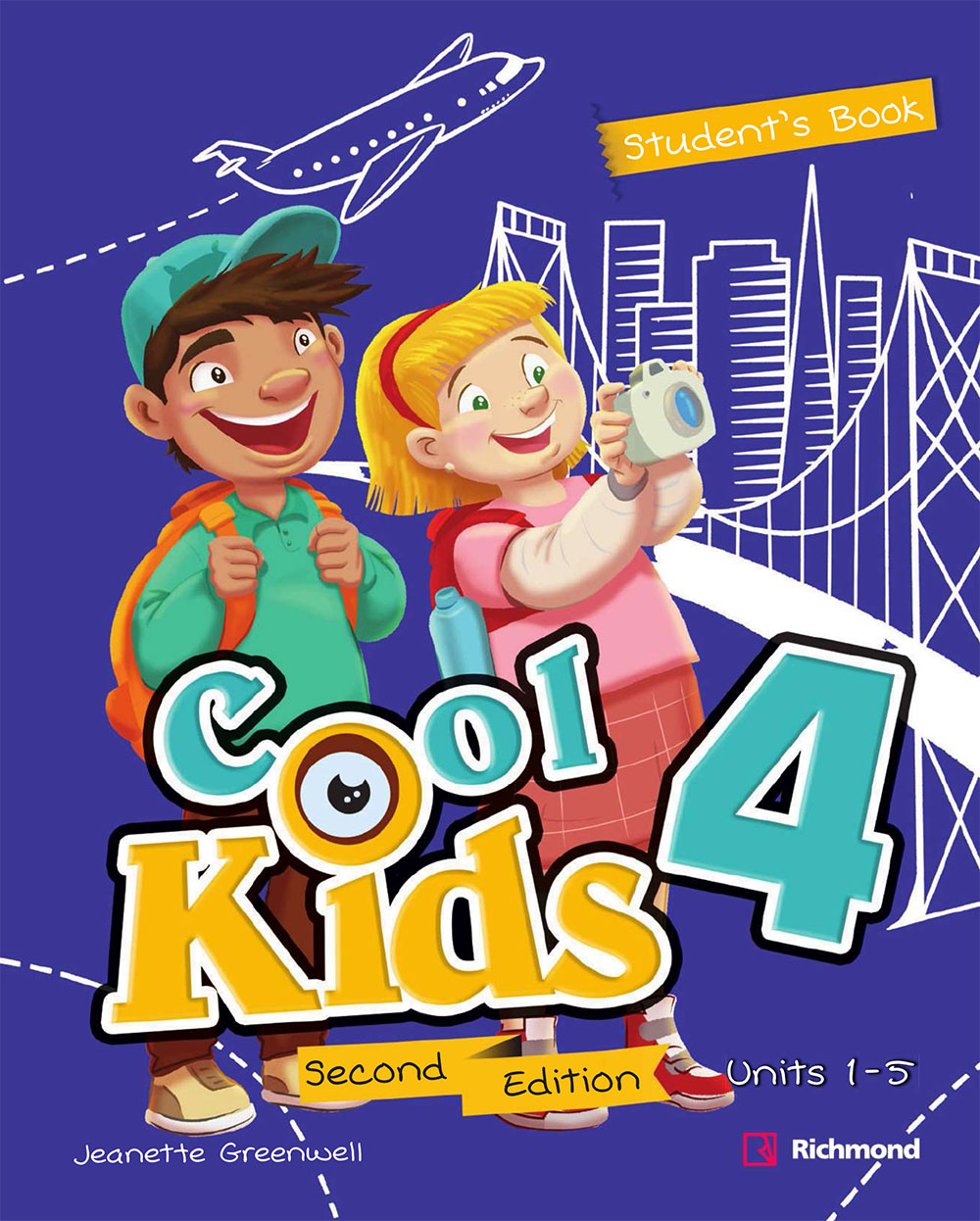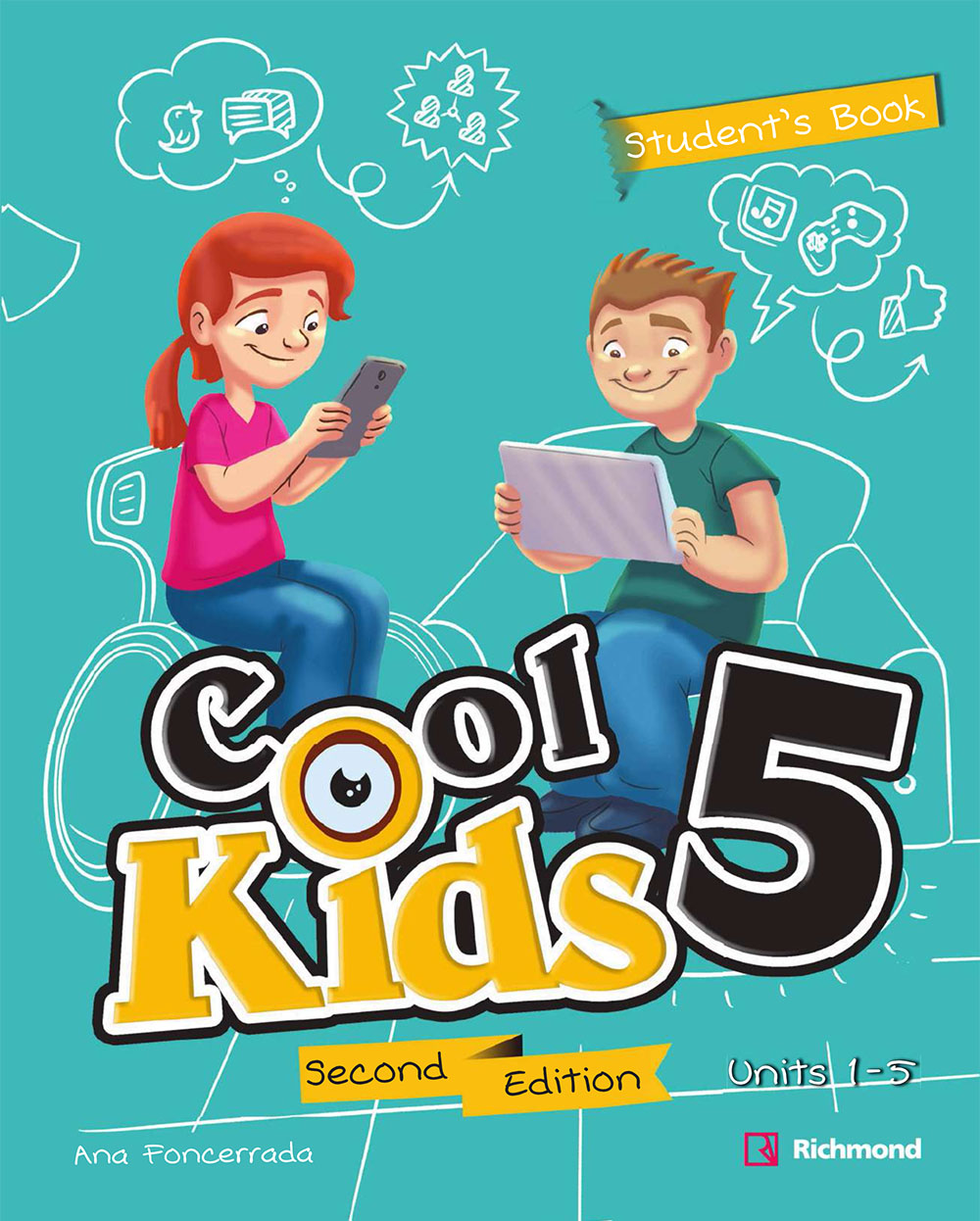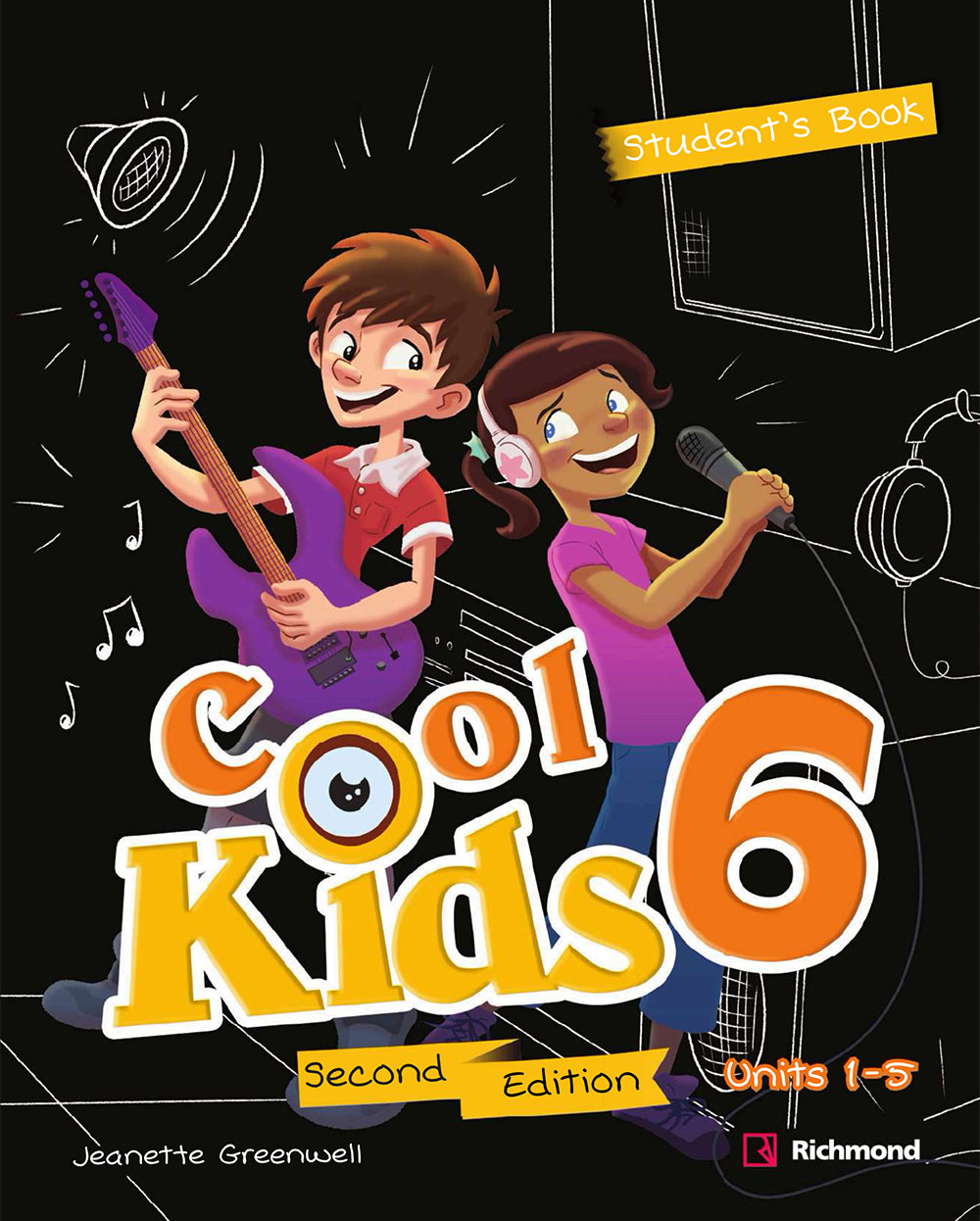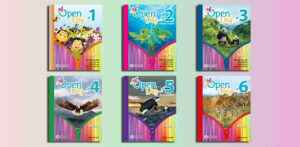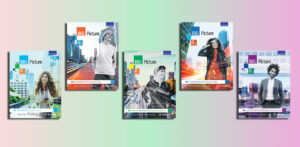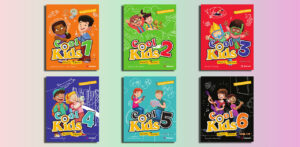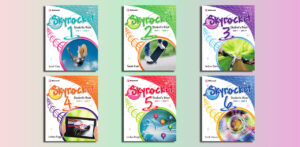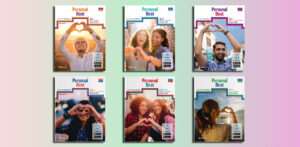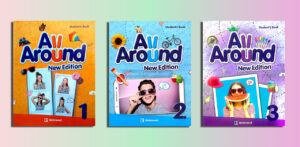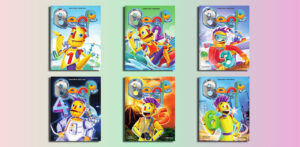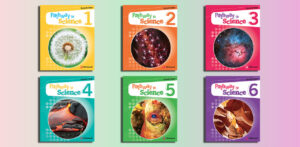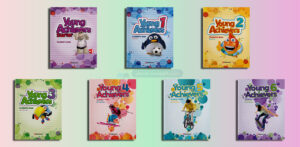Cool Kids 2nd Edition
Level 1
Cool Kids 2e 1 Digital Student’s Book.zip
Cool Kids 2e 1 Digital Teacher’s Guide.zip
Cool Kids 2e 1 Digital Workbook.zip
Cool Kids 2e 1 iSolutions U 1-5.zip
Cool Kids 2e 1 iSolutions U 6-10.zip
Cool Kids 2e 1 Reading.pdf
Cool Kids 2e 1 Student’s Book Audio.zip
Cool Kids 2e 1 Student’s Book U 1-5.pdf – Sample: Click
Cool Kids 2e 1 Student’s Book U 6-10.pdf
Cool Kids 2e 1 Teacher’s Guide U 1-5.pdf
Cool Kids 2e 1 Teacher’s Guide U 6-10.pdf
Cool Kids 2e 1 Teacher’s Resources.zip
Cool Kids 2e 1 Workbook Audio.zip
Cool Kids 2e 1 Workbook U 1-5.pdf – Sample: Click
Cool Kids 2e 1 Workbook U 6-10.pdf
Level 2
Cool Kids 2e 2 Digital Student’s Book.zip
Cool Kids 2e 2 Digital Teacher’s Guide.zip
Cool Kids 2e 2 Digital Workbook.zip
Cool Kids 2e 2 iSolutions U 1-5.zip
Cool Kids 2e 2 iSolutions U 6-10.zip
Cool Kids 2e 2 Reading.pdf
Cool Kids 2e 2 Student’s Book Audio.zip
Cool Kids 2e 2 Student’s Book U 1-5.pdf – Sample: Click
Cool Kids 2e 2 Student’s Book U 6-10.pdf
Cool Kids 2e 2 Teacher’s Guide U 1-5.pdf
Cool Kids 2e 2 Teacher’s Guide U 6-10.pdf
Cool Kids 2e 2 Teacher’s Resources.zip
Cool Kids 2e 2 Workbook Audio.zip
Cool Kids 2e 2 Workbook U 1-5.pdf – Sample: Click
Cool Kids 2e 2 Workbook U 6-10.pdf
Level 3
Cool Kids 2e 3 Digital Student’s Book.zip
Cool Kids 2e 3 Digital Teacher’s Guide.zip
Cool Kids 2e 3 Digital Workbook.zip
Cool Kids 2e 3 iSolutions U 1-5.zip
Cool Kids 2e 3 iSolutions U 6-10.zip
Cool Kids 2e 3 Reading.pdf
Cool Kids 2e 3 Student’s Book Audio.zip
Cool Kids 2e 3 Student’s Book U 1-5.pdf – Sample: Click
Cool Kids 2e 3 Student’s Book U 6-10.pdf
Cool Kids 2e 3 Teacher’s Guide U 1-5.pdf
Cool Kids 2e 3 Teacher’s Guide U 6-10.pdf
Cool Kids 2e 3 Teacher’s Resources.zip
Cool Kids 2e 3 Workbook Audio.zip
Cool Kids 2e 3 Workbook U 1-5.pdf – Sample: Click
Cool Kids 2e 3 Workbook U 6-10.pdf
Level 4
Cool Kids 2e 4 Digital Student’s Book.zip
Cool Kids 2e 4 Digital Teacher’s Guide.zip
Cool Kids 2e 4 Digital Workbook.zip
Cool Kids 2e 4 iSolutions U 1-5.zip
Cool Kids 2e 4 iSolutions U 6-10.zip
Cool Kids 2e 4 Reading.pdf
Cool Kids 2e 4 Student’s Book Audio.zip
Cool Kids 2e 4 Student’s Book U 1-5.pdf – Sample: Click
Cool Kids 2e 4 Student’s Book U 6-10.pdf
Cool Kids 2e 4 Teacher’s Guide U 1-5.pdf
Cool Kids 2e 4 Teacher’s Guide U 6-10.pdf
Cool Kids 2e 4 Teacher’s Resources.zip
Cool Kids 2e 4 Workbook Audio.zip
Cool Kids 2e 4 Workbook U 1-5.pdf – Sample: Click
Cool Kids 2e 4 Workbook U 6-10.pdf
Level 5
Cool Kids 2e 5 Digital Student’s Book.zip
Cool Kids 2e 5 Digital Teacher’s Guide.zip
Cool Kids 2e 5 Digital Workbook.zip
Cool Kids 2e 5 iSolutions U 1-5.zip
Cool Kids 2e 5 iSolutions U 6-10.zip
Cool Kids 2e 5 Reading.pdf
Cool Kids 2e 5 Student’s Book Audio.zip
Cool Kids 2e 5 Student’s Book U 1-5.pdf – Sample: Click
Cool Kids 2e 5 Student’s Book U 6-10.pdf
Cool Kids 2e 5 Teacher’s Guide U 1-5.pdf
Cool Kids 2e 5 Teacher’s Guide U 6-10.pdf
Cool Kids 2e 5 Teacher’s Resources.zip
Cool Kids 2e 5 Workbook Audio.zip
Cool Kids 2e 5 Workbook U 1-5.pdf – Sample: Click
Cool Kids 2e 5 Workbook U 6-10.pdf
Level 6
Cool Kids 2e 6 Digital Student’s Book.zip
Cool Kids 2e 6 Digital Teacher’s Guide.zip
Cool Kids 2e 6 Digital Workbook.zip
Cool Kids 2e 6 iSolutions U 1-5.zip
Cool Kids 2e 6 iSolutions U 6-10.zip
Cool Kids 2e 6 Reading.pdf
Cool Kids 2e 6 Student’s Book Audio.zip
Cool Kids 2e 6 Student’s Book U 1-5.pdf – Sample: Click
Cool Kids 2e 6 Student’s Book U 6-10.pdf
Cool Kids 2e 6 Teacher’s Guide U 1-5.pdf
Cool Kids 2e 6 Teacher’s Guide U 6-10.pdf
Cool Kids 2e 6 Teacher’s Resources.zip
Cool Kids 2e 6 Workbook Audio.zip
Cool Kids 2e 6 Workbook U 1-5.pdf – Sample: Click
Cool Kids 2e 6 Workbook U 6-10.pdf
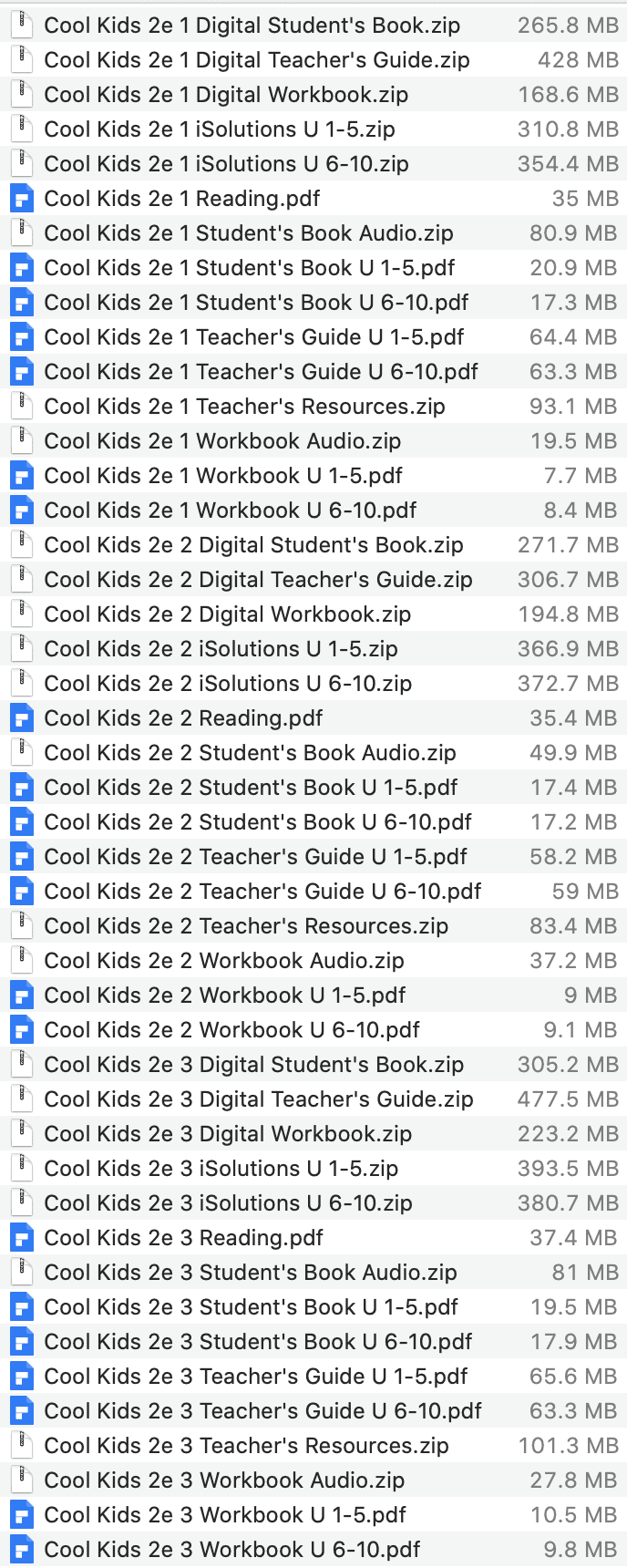
Overview of the “Cool Kids 2nd Edition” by Richmond
Contents
| ✅ Coursebook: | Cool Kids, Second Edition |
| ✅ Publisher: | Richmond |
| ✅ Levels: | A1, A2 |
| ✅ English type: | American English |
| ✅ For: | Primary School |
| ✅ Publication year: | 2021 |
- Cool Kids Second Edition is a 6-level primary English course (for children) published by Richmond.
- It is intended for use in elementary/primary school settings, typically with 3–5 hours per week of instruction.
- It uses American English as its base.
Philosophy & approach
- The course aims to cater to different learning styles by including hands-on activities (stickers, cut-outs, crafts) and visual/kinesthetic elements.
- It supports learner autonomy via self-evaluation tools and materials that students can use independently (e.g. workbook, online resources)
- Discovery / inductive grammar is part of its design: students are encouraged to notice patterns and “discover” grammar rules rather than just receive them as rules.
- The course is communicatively grounded: language is presented in meaningful contexts, with emphasis on using English for real communication (speaking, listening, reading, writing) rather than isolated drills.
- It also includes values education (morals, character, etc.) in the unit structure.
Key features & strengths
- Varied, engaging activities: The use of crafts, stickers, pair / group games, songs and chants helps keep young learners motivated.
- Scaffolded language exposure: New vocabulary and grammar are introduced in context and recycled in communicative tasks.
- Independent & digital learning support: The RLP (online platform) lets students access audio, interactive exercises, and homework assignments. Teachers can track progress.
- Cross-curricular and reading components: The reading texts and project work often tie in with other subjects or themes, expanding beyond just “English class.”
- Teacher support: Detailed guides, optional activities, and resource materials make it easier for teachers to adapt and manage lessons.
Potential considerations / challenges
- Because it offers many supplementary materials and digital components, access to technology / digital infrastructure is a factor for full use (e.g. computers, internet).
- Some activities (crafts, cut-outs) demand materials and preparation time; teachers will need to plan ahead.
- The inductive grammar approach relies on students being given enough exposure and guidance to “notice” patterns; weaker learners might need more scaffolding or explicit explanations.
- Localization: because it is designed primarily for certain markets (e.g. Latin America) in American English, some cultural references or vocabulary may need adaptation to local contexts.
Cool Kids 1 Student’s Book Second Edition
Who is suitable for “Cool Kids, Second Edition”?
“Cool Kids, Second Edition” by Richmond is designed specifically for young learners of English at the primary school level — typically ages 6 to 12, depending on the country and school system. Here’s a detailed breakdown of who it’s suitable for and why:
Target learners
Primary / Elementary Students
- Ideal for students in grades 1–6 (or roughly ages 6–12).
- It assumes that students are beginners or lower-intermediate learners of English.
- The six levels (1–6) align with A1–A2 levels of the CEFR (Common European Framework of Reference for Languages).
- Levels 1–3: Beginner to early elementary (A1)
- Levels 4–6: Elementary to pre-intermediate (A1–A2)
Students learning English as a Foreign Language (EFL)
- Especially suited for children studying English in non-English-speaking countries, e.g. in Asia or Latin America.
- The language exposure and pace are designed for 3–5 hours of English per week, not for immersion programs.
Cool Kids 2 Student’s Book Second Edition
Learning environments
Schools using English programs
- Works well in bilingual schools, private language centers, or public primary schools with a structured English curriculum.
- The program fits easily into after-school or supplementary English courses because each unit can be taught flexibly (around 8–10 class hours).
Blended learning or digital-friendly classrooms
- The Richmond Learning Platform (RLP) makes it suitable for blended or hybrid classrooms — students can access online games, activities, and audio at home.
- Teachers can track progress digitally, making it ideal for schools that want to combine traditional books with technology.
Learning styles supported
| Learning style | How the course supports it |
|---|---|
| Visual learners | Colorful illustrations, flashcards, stickers, and visual storytelling (comics and picture sequences). |
| Auditory learners | Songs, chants, and listening tasks on the CD / platform. |
| Kinesthetic learners | Cut-outs, crafts, games, and role-play activities. |
| Interpersonal learners | Pair and group work (“Let’s talk” and “Cool Game” sections). |
| Independent learners | Self-evaluation, workbook tasks, online reinforcement. |
Cool Kids 3 Student’s Book Second Edition
Teachers and institutions that benefit most
- Primary teachers seeking a ready-to-use, communicative course with rich visual and interactive support.
- Schools that value character education — the series integrates “Values” lessons into each unit.
- Programs with limited classroom hours, since each level is designed for around 3–5 teaching hours per week.
- Teachers working with mixed-ability classes — the materials provide plenty of scaffolding and optional extension tasks.
Who it may not suit as well
- Very advanced young learners (above A2 level) — they may find the content too basic.
- Teenagers or adults — the visuals, songs, and tone are clearly aimed at children.
- Programs without access to simple classroom resources (e.g., scissors, glue, printers) might need to adapt or skip craft sections.
In summary:
- Cool Kids, Second Edition is best suited for young EFL learners aged 6–12, studying American English in a structured, communicative classroom with 3–5 hours per week. It’s especially effective for teachers who want to make lessons fun, interactive, and values-based — and for schools that support both print and digital learning.
Cool Kids 4 Student’s Book Second Edition
The benefits of “Cool Kids, Second Edition”
1. Engaging and Child-Friendly Design
Colorful, motivating materials
- The series uses bright visuals, fun characters, and child-centered topics (family, school, animals, games, celebrations, etc.) that capture young learners’ interest.
- Each unit includes songs, chants, stickers, and crafts, making learning playful and memorable rather than repetitive.
Hands-on learning
- Activities such as cut-outs, crafts, and drawing tasks appeal to kinesthetic learners and help reinforce vocabulary and structures through doing, not just reading.
- Each book includes a Cool Craft section, where children create something related to the theme — reinforcing language through creativity.
2. Strong Focus on Communication
Real-life language use
- Lessons emphasize practical communication, encouraging students to use English for pair work, group games, and real conversations.
- Dialogues and listening scripts use authentic, age-appropriate expressions in American English.
Gradual speaking confidence
- Through chants, songs, and dialogues, students build rhythm, pronunciation, and fluency in a stress-free way.
- The program regularly recycles vocabulary and grammar, ensuring children can use what they learn in natural contexts.
3. Clear Structure and Gradual Progression
Step-by-step learning path
- The course spans six levels, covering the A1–A2 range of the CEFR, making it easy for schools to plan a full primary program.
- Each level includes 10 units + review units, ensuring balanced coverage of all four skills (listening, speaking, reading, writing).
Reinforcement and recycling
- Vocabulary and grammar are systematically recycled across units, so students retain and build upon prior knowledge.
- Review pages (“Cool Review”) consolidate learning and prepare students for simple assessments or projects.
4. Digital and Interactive Learning
Richmond Learning Platform (RLP)
- The online platform offers interactive games, listening exercises, eBooks, and homework activities.
- Teachers can assign tasks and track students’ progress digitally.
- Students can access the platform from home for extra practice and review, encouraging independent study.
Audio and multimedia support
- CDs and downloadable audio files contain songs, dialogues, and listening comprehension tracks, helping teachers easily integrate listening practice.
5. Excellent Teacher Support
Complete teacher’s package
- The Teacher’s Guide provides step-by-step lesson plans, warm-ups, wrap-ups, optional extension ideas, answer keys, and audio scripts.
- Flashcards, resource sheets, and test templates help teachers save preparation time.
Flexibility in the classroom
- The activities can be adapted to different class sizes and proficiency levels.
- Clear instructions and optional tasks allow teachers to personalize lessons based on learners’ needs.
Cool Kids 5 Student’s Book Second Edition
6. Focus on Values and Personal Development
Values Education
- Every unit introduces a “Value” — such as kindness, respect, teamwork, or honesty — helping students connect language learning with personal growth.
- This holistic approach supports social-emotional learning (SEL) alongside linguistic skills.
7. Reading and Cross-Curricular Integration
Cool Reading sections
- Short stories, comics, and non-fiction texts help children develop reading comprehension and expand vocabulary.
- Some readings tie into cross-curricular themes (science, art, geography), showing how English can connect to other subjects.
8. Supports Different Learning Styles
| Learning Style | Course Feature |
|---|---|
| Visual | Colorful images, stickers, picture sequences, illustrated vocabulary |
| Auditory | Songs, chants, dialogues, listening activities |
| Kinesthetic | Cut-outs, crafts, role-plays, movement activities |
| Interpersonal | Pair and group speaking games |
| Intrapersonal | Workbook self-evaluation and reflection tasks |
This makes Cool Kids, Second Edition particularly suitable for mixed-ability or diverse classrooms.
9. Cultural and Global Awareness
- The course introduces international themes and cultural celebrations, helping children appreciate global diversity while using English.
- It builds curiosity and empathy by comparing children’s daily lives across cultures.
10. Proven Track Record
- Cool Kids has been widely adopted in Latin America and Asia, showing that it adapts well to non-English-speaking contexts.
- The Second Edition updates the visuals, audio, and structure based on years of classroom feedback, making it more engaging and teacher-friendly.
In summary
- Cool Kids, Second Edition helps young learners enjoy English, communicate confidently, and develop strong values in a structured, motivating, and modern environment.
- It combines solid pedagogy, digital tools, and child-centered fun—making it one of the most comprehensive primary EFL programs available.
Cool Kids 6 Student’s Book Second Edition
Effective learning strategies for “Cool Kids, Second Edition”
1. Build a Routine Around the Course Structure
Each Cool Kids unit follows a predictable rhythm:
Warm-up → Vocabulary → Grammar → Practice → Craft/Project → Review.
To maximize learning:
- Maintain consistent timing: 2–3 short lessons per week (30–45 minutes each) works better than long, infrequent sessions.
- Recycle old content: Start each lesson with a mini game or chant from the previous unit. This reinforces retention naturally.
- Use unit goals visibly: Post the “I can…” statements from the Teacher’s Guide so children know what they’re working toward.
2. Make Communication the Core
Since Cool Kids is communicative and task-based, speaking should happen every lesson.
Strategies:
- Use pair work early — even simple exchanges like “What’s this?” “It’s a cat.”
- Role-plays after every dialogue: Students act out conversations using puppets or props.
- Recycle songs/chants as pronunciation drills — rhythm helps children internalize natural stress patterns.
- Use Cool Games as formative assessment — observe how children use target language in context.
3. Integrate Hands-On Learning
The series includes crafts, cut-outs, and sticker tasks, which are not just fun but essential for young learners’ memory development.
Strategies:
- Prepare craft materials beforehand (scissors, glue, colored paper).
- Use crafts as storytelling tools — e.g., after making a paper animal, students describe it using new adjectives.
- Link crafts to values: “We made a friendship card because we’re learning about being kind.”
4. Strengthen Reading and Writing Gradually
The Cool Reading and Workbook sections develop literacy step by step.
Strategies:
- Pre-reading: Ask students to predict the story using pictures.
- During reading: Act out parts of the text or assign voices to characters.
- Post-reading: Students can draw their favorite scene or write a simple caption.
- Encourage reading aloud in pairs to build confidence and fluency.
5. Use Digital Tools for Extension and Review
The Richmond Learning Platform (RLP) is a key support for modern classrooms.
Strategies:
- Assign 1–2 interactive tasks from the RLP per week — especially for listening and vocabulary review.
- Have students use the platform’s audio at home for pronunciation practice.
- Use the teacher’s progress reports to identify students who need extra support.
- Encourage parents to explore the online games together with their children — home involvement increases retention.
6. Foster Learner Autonomy
Cool Kids encourages self-assessment and reflection.
Strategies:
- Use the self-evaluation checklists at the end of each unit (“I can introduce myself,” “I can talk about my family”).
- Celebrate small achievements — stickers, badges, or a “Cool Star” wall motivate children to keep improving.
- Have students keep a mini English portfolio (drawings, short writings, crafts, and self-evaluation pages).
7. Support Mixed-Ability Classes
Every Cool Kids class includes learners who progress at different speeds.
Strategies:
- Differentiate tasks:
- Stronger students → add extra details to dialogues.
- Struggling students → use picture prompts or sentence frames.
- Flexible grouping: Pair stronger students with weaker ones in cooperative activities.
- Tiered homework: Assign workbook pages selectively or add extension sheets from the Resource CD.
8. Emphasize Values and Character Education
Each unit includes a “Value” lesson (e.g., sharing, respect, honesty). This isn’t just moral — it enhances communication and classroom harmony.
Strategies:
- Discuss the value in context: “How can we show kindness in English class?”
- Act out simple role-plays showing the value in action.
- Create a class “Values wall” where students post examples of good behavior.
9. Continuous Review & Recycling
- Use the “Cool Review” pages after every two units to revisit core grammar and vocabulary.
- Play review games like Bingo, Memory, or Flashcard Toss — short 5-minute activities keep past material fresh.
- Every few weeks, have a “Cool Revision Day” focused entirely on songs, chants, and storytelling.
10. Engage Parents and Home Support
Young learners thrive when home and school work together.
Strategies:
- Send short notes or WhatsApp reminders to parents with suggested at-home games (“Sing the Unit 3 song together!”).
- Encourage children to show their workbook and crafts at home — this reinforces pride and retention.
- Share online audio links for pronunciation practice.
Summary: Key Effective Strategies
| Focus Area | Strategy | Benefit |
|---|---|---|
| Routine | Consistent 2–3 lessons/week | Builds stability and habit |
| Speaking | Daily pair work & chants | Boosts fluency and confidence |
| Crafts | Link to unit theme | Reinforces vocabulary and engagement |
| Reading | Pre- and post-activities | Develops comprehension naturally |
| Digital tools | Use RLP for homework | Enhances listening & motivation |
| Self-evaluation | Reflection after units | Builds autonomy |
| Values | Class discussions | Promotes emotional intelligence |

